Secrets and step-by-step agricultural techniques for growing and caring for beets in the open field
Many people try to grow beets in their summer cottage. Not everyone succeeds in this, since for beets, cultivation and care in the open field have a number of features. The culture needs to be watered and properly fed in time to get large and sweet roots by the end of summer.
How and when to plant beets outdoors?
A heat-loving two-year crop should not be planted too early on the beds. Beets tolerate short-term temperature drops well. Even surviving plants can start shooting in mid-summer. This process is triggered at the genetic level, since a low temperature for biennial plants marks the end of the growing season of the first year of development. When it gets warmer, the bushes do not form a root crop, but all forces are directed to flowering and setting seeds, releasing a flower arrow.
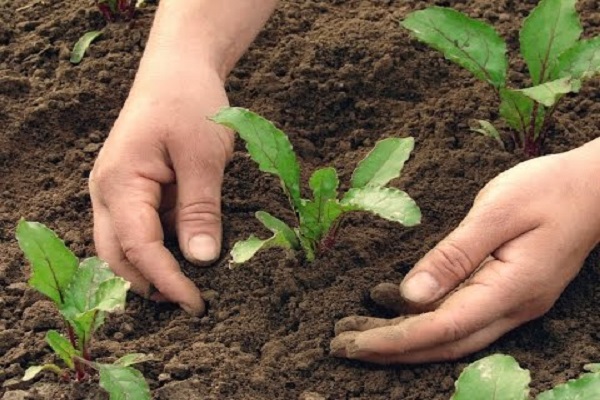
To avoid this, the gardener should choose a time for sowing beets in open ground when the frost is over, and the soil warms up to a temperature of about + 10 ... + 12 ° C. For central Russia, the approximate time for sowing beets for winter harvesting is the last decade of May. The seeds sown at this time will have time to sprout and give a good harvest of root crops by the end of August - beginning of September, depending on the variety.
To grow beets for early production, the gardener should prefer the seedling method.
In regions with mild winters and early onset of warmth, they also practice podwinter planting of beets to get early vegetables. In this case, the seeds are sown in late October - early November. Seeding should be done to a depth of 3-4 cm. To preserve the seeds, the ridge is mulched (with sawdust, peat). The thickness of the mulch layer is 5-7 cm. Beets grown in this way are not suitable for winter storage.

Soil preparation and sowing seeds
The preparation of a site for beets for spring sowing in the ground begins in the fall, after harvesting. The best predecessors are potatoes and other nightshades, onions, legumes. You cannot plant beets after chard and cabbage of various types, as well as carrots and other root crops.
The best place is an area with loose and light fertile soil, which is well warmed by the sun. Soils with a neutral or slightly alkaline reaction are preferred. If horse sorrel or wood lice (stellate) grows in the garden, then the soil has increased acidity. When preparing a plot for growing beets in the open field, it is better to calcify such soil by adding dolomite flour, chalk or fluff at 1-1.5 kg / m².
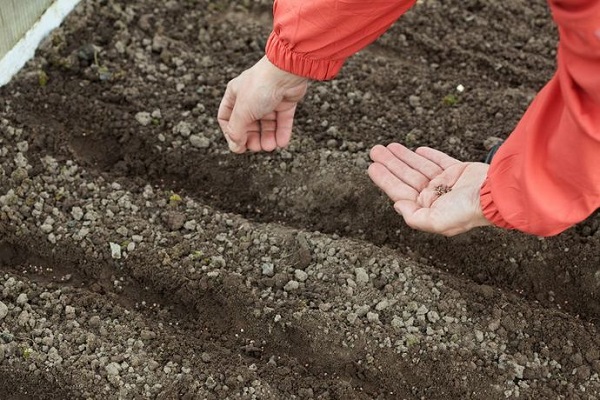
In order for the beets to be tasty, the soil on the ridges must be filled with mineral and organic fertilizers. For 1 m² you need to make:
- 20-30 g of ammonium sulfate;
- 10-15 g of potassium chloride;
- 30-40 g of superphosphate;
- 15-20 g of ammonium nitrate;
- 4-5 kg of humus.
Do not use fresh manure, bird droppings, compost or similar materials to fertilize the soil. Any organic fertilizers must be applied in a rotted form so as not to provoke beet disease scab.

Minerals and organic matter are scattered over the surface of the ridge, and then they dig up the soil well, thoroughly mixing the soil and fertilizers. During the winter, the granules will dissolve, enriching the soil with the substances necessary for beets. In the spring, the site can be dug up again, preparing the beds for sowing.
Beet seeds differ from others: they are collected in 2-4 pieces. and are covered with a common shell. Each round and rough seed in a bag will sprout several times as it germinates. This must be taken into account during sowing and the seeds should be placed at a distance of at least 5 cm from each other. There is also a single-sprout beet variety, which sprouts contrary to the general rules and gives only 1 sprout from each grain.
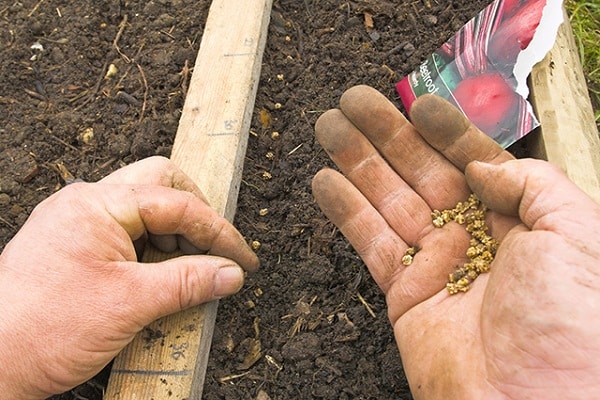
Before sowing, the seeds should be inspected. Their natural color is yellowish gray. If they have a different color, then the pre-sowing treatment was carried out by the manufacturers of the products. Such seeds must be germinated or sown immediately. If the planting material is not processed, it is soaked in a warm solution of light pink potassium permanganate. This procedure destroys bacteria and fungal spores.
After soaking, the seeds can be sown immediately if the site selection and preparation of the beds have already been completed. Sometimes gardeners prefer to plant germinated seeds. To do this, they are placed in a damp cloth and placed in a warm place for 2-3 days, maintaining a constant moisture level of the material. During this time, reddish sprouts appear. Non-germinated seeds can be left for another 1-2 days, they may sprout a little later. Seeds with seedlings are planted in furrows to a depth of about 3-4 cm and covered with soil.

When sowing, the following distances must be observed:
- leave 5 cm between the grains in 1 row;
- there should be about 25 cm between the rows.
Beets, planted on narrow ridges (according to Meatlider), work well. With this method, beds are made about 35 cm wide, along the edges they form bumpers from the soil. Seeds are planted at a distance of 5 cm from each other along these sides. The advantage of this method is ease of maintenance and uniform illumination of all plants.
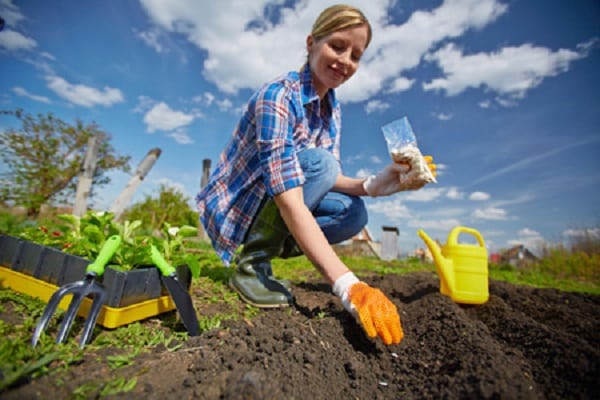
Planting seedlings
To obtain early production, the beet is grown in seedlings. To do this, seeds are sown 2-3 weeks before planting in open ground. The transplant is performed when 2-3 leaves appear. For the seedling method, you can grow beets in a greenhouse or in deep boxes on the windowsill. You can sow it more often than with direct sowing in open ground.
Seedlings are planted according to the scheme proposed for sowing seeds (5x25 cm). It is better to plant young plants in cool and cloudy weather, before rain. If the weather is sunny and hot, it is advisable to shade the ridges with gauze or lutrasil, pulling the fabric over the installed wire arcs.

Beet care
After planting seeds or seedlings, the gardener must follow the rules for caring for beets in the open field. The final result depends on their observance: the size of the root crop, its taste and keeping quality of vegetables during winter storage. Following a simple step-by-step agricultural technique will help you grow the best harvest.
Thinning of beet seedlings
Thinning plantings of beets produced in order to get larger roots. It is recommended to do this 2-3 times per season:

- When sowing directly into the ground, the first thinning is performed when 2-3 leaves appear on the plants.Several shoots will hatch from each seed, so the excess must be removed, leaving the largest and most developed seedling. Plucked sprouts can be used as seedlings: place them where the beets did not sprout.
- Beets grown in seedlings are thinned for the first time, when a root crop with a diameter of 1.5-2 cm is formed in the soil. For a seed-sown crop, thinning at this time will be the second. Leave 10 cm between the bushes. When thinning, you need to remove weak and diseased plants, as well as those that have released flower arrows. Removed young rosettes can be used as a vitamin supplement in salads (instead of chard) or for making summer borscht.
- The next thinning is done if you want to grow especially large root crops. At this time, the diameter of the root crop already reaches 5-6 cm, so the young sweet fruit can be used as food as you like.
After each thinning, it is advisable to hilling beets. During this operation, you need to have a good idea of how to properly add soil to the root collar of the rosette: the soil should not close the leaf growth point in the center of the bush. It is only necessary to slightly cover the top of the root crop with earth, which is above the surface. Most often, varieties with elongated root crops rise above the ground (Cylinder, Rocket, and others). At the same time, the rosette tilts towards the soil, and the beets become curved.
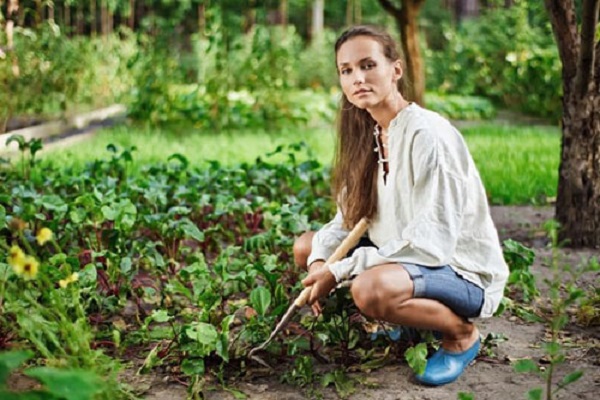
Watering and feeding
The secrets to growing good quality beets lie in proper watering and feeding of the plants. Watering the seedbed should be abundant in order to wet the soil to a depth of about 10 cm, where the culture has suction thin roots. As it grows, the volume of irrigation water is increased to 20-30 l / m² if there is not enough natural precipitation.
During the formation of a root crop, a lack of moisture leads to the formation of uncolored and hard rings in the beet pulp.
Until the underground part reaches a diameter of 5-6 cm water the beets better every day or every other day, focusing on the drying of the topsoil by 2-3 cm in depth. In the fall, 3-4 weeks before harvesting the crop intended for storage, watering is stopped, even if there is no rain. So in the root crop more sugar substances are formed, and it will be better stored.

To increase the sugar content, you can feed the plantings with salted water (0.5 tsp per 10 liters) several times per season. At the initial stage of growth (before the formation of root crops), beets need fertilizing with nitrogen fertilizers. To do this, add 1 tbsp for 10 liters of water, in addition to salt. l. ammonium nitrate. At the end of summer, the plant no longer needs nitrogenous substances, but feeding is done in August, adding 1 tbsp of water to 10 liters of water. l. potassium nitrate.
Liquid top dressing can be applied not only to the soil, but also by foliar method, that is, by watering the nutrient solution over the leaves.
Processing and fertilization
After watering or applying liquid top dressing, the soil in the aisles must be loosened to a depth of 4–5 cm. When performing this procedure, you must not touch the root crops, so the processing must be done carefully. The video shows how, together with loosening, they destroy the weeds that have time to grow between the outlets.

When loosening, fertilizers are also applied, feeding the plantation in a different way. A complex mineral fertilizer (Agricola-4 or others) is scattered in the aisles, and then it is embedded in the soil with a hoe. When carrying out such feeding, it is not necessary to apply solutions of other fertilizers.
Beet pests and diseases
Diseases and beet pests can be detected by the following features:
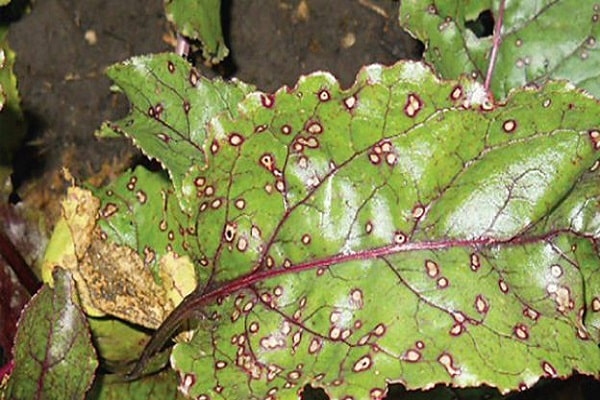
- Brown spots with a black dot inside on the leaves of beets are a phomosis disease that affects both the leaves and the root crop. Spraying the leaves with a boric acid solution (0.5 tsp per 10 liters of water) and adding borax at 3 g / m² will help.
- Peronosporosis is a fungal infection.At the same time, a grayish bloom is visible on the underside of the leaf. You can fight the fungus with fungicides.
- The root-eater, or black leg, affects young seedlings. Disease prevention is soil liming and spring application of borax (3-5 g / m²) during digging.
- Large root crops are more likely to infect fusarium and brown rot. They develop on heavy soils, and the methods of their treatment are liming and the introduction of borax.
Insect pests also damage beets. Most of them are leaf-eating and sucking (aphids, fleas, bugs and others). It will be possible to protect the plants with the help of treatments with appropriate chemicals (Karbofos, Iskra).
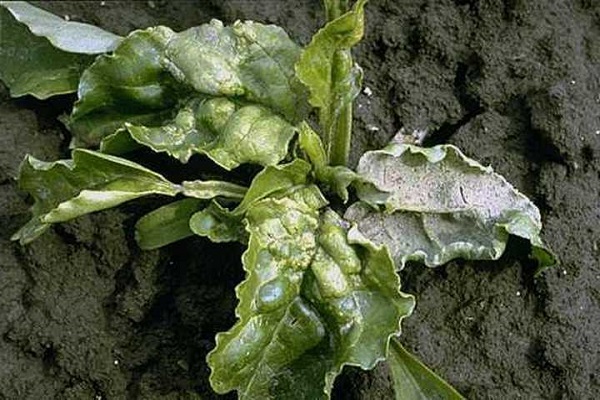
Harvesting and storage of crops
Yield and ripening rates depend on the beet variety. But the approximate harvesting dates for central Russia are mid to late September, when the air temperature will drop to + 5 ... + 15 ° С. It is undesirable to be late with the harvest, exposing the beets to freezing when the temperature drops below 0 ° C.
Root crops are pulled out of the soil, the leaves and the point of their growth are cut off, 2/3 of the root is removed. For storage, beets are laid in boxes, sprinkled with dry sand. Large quantities of vegetables can be stored well in the cellar in mesh bags.
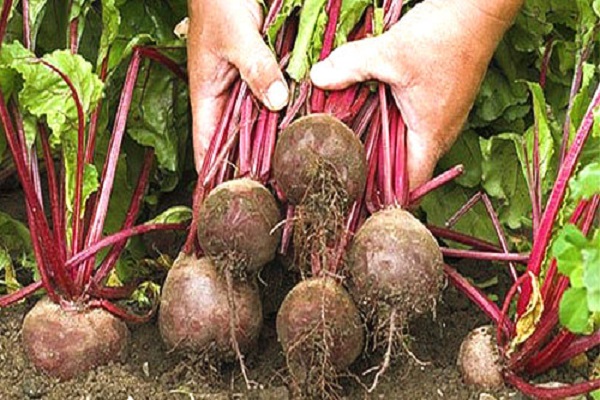
What can be planted after beets and what can be combined with beets?
If the gardener practices compacted planting, then the following crops will be the best neighbors for beets:
- bulb onions;
- leafy vegetables and herbs (lettuce, spinach and others);
- Swiss chard and early maturing beet varieties.
If the crop rotation is observed the next year after the grown beets, you can plant potatoes and other nightshades, sow carrots, garlic, pumpkin crops. The best substitutes are legumes, which will restore the nitrogen content of the soil. You cannot plant chard in the same place: its leaves will dry and wither, drying out in the garden.
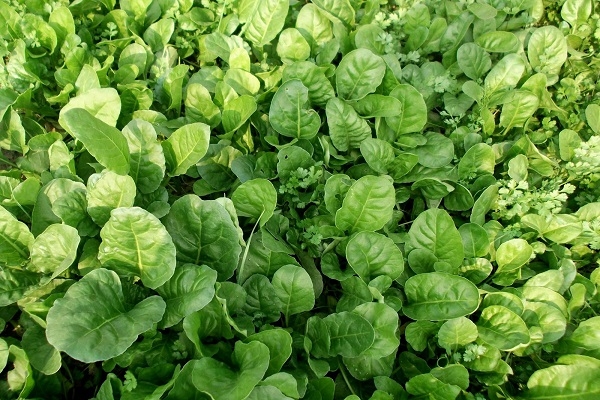

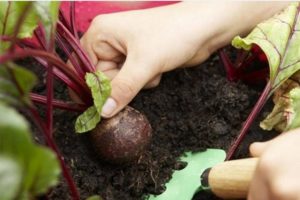

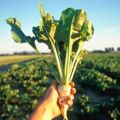
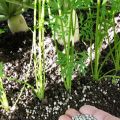


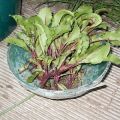


Yes, you need to water the beets abundantly, but still not like rice - so that the water does not stand ... Otherwise, in the first year of my gardening, after reading about abundant watering, I overdid it a little, and the beets were not stored at all in the winter. Experience comes with time. By the way, like other crops, it is also good to feed beets with a product BioGrow.